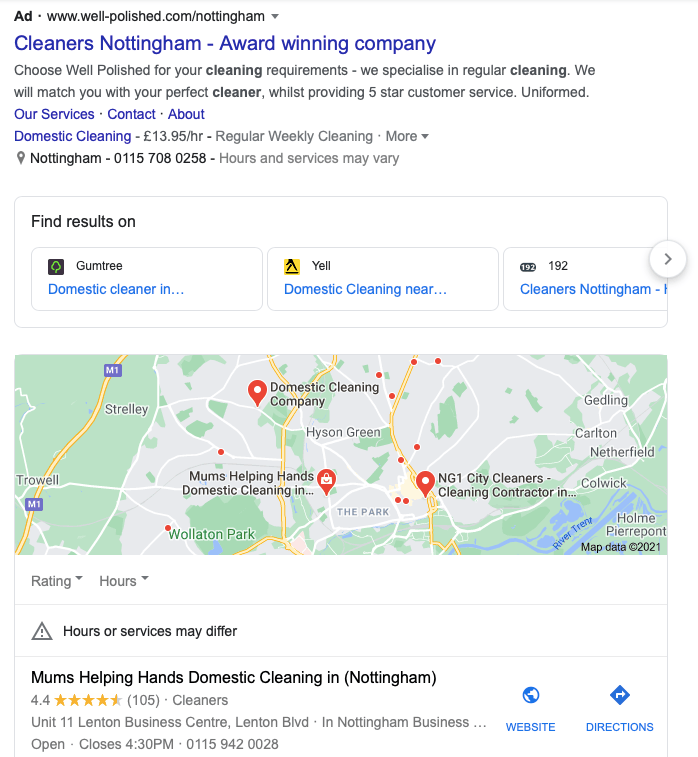So, you have decided to embrace the Google Ads service for the coming year. Done correctly, this can be hugely positive for any business.vAlas, so many people do not abide by best practice for Google Ads. This can lead to costly errors1. To see results from your Google PPC efforts, we have put together our Google Ads best practices for 2021.
With this in mind, here are ten tips that will stand you in good stead to profit from a Google Ads campaign.
Assign a budget and stick to it
Financial constraints can be the enemy of progress and innovation. When it comes to Google Ads, however, they are essential.
The real cost of Google Ads is not a binary figure that’s set in stone. It will rise and fall depending on a variety of external factors. Ensure you do not fall into the trap of unexpected marketing expenditure exceeding your advertising-led income.
Familiarise yourself with new features and developments
Google is a constantly evolving business, with new features and improvements arising all the time. Much like SEO algorithms, if you fail to remain au fait with the latest developments you risk being left behind. Constantly check in with Google Ads and ensure that you’re up to date with any moving goalposts.
Work on your quality score
We have discussed the importance of quality score in detail elsewhere, so we will not repeat ourselves here. All we’ll say is that your quality score means everything in Google Ads. If your score is ranking below 5, focus on improving this before spending money on advertising.

If your Google Ads quality score is below 5, paying for advertising is a false economy
Review your keywords
Google Ads best practice all revolves around keywords. This can be a balancing act. You’ll need to find keywords that separate you from the competition while also matching user search intent.
Essentially, this involves using a combination of generic and precise keywords. The former will cast a wide net across the web. The latter will bait and hook particular users that need your service. Practice and embrace trial and error until you master your keyword strategy.
Think mobile
The vast majority of potential users and customers will be browsing the web on their smartphones or tablets. As a result, this must be factored into your Google Ads best practice.
Ensure that all pertinent information and SERPs can be quickly downloaded and easily viewed on a smaller screen. Failing to consider mobile surfers and their preferences can be fatal in the 21st Century.
Embrace voice technology
Another side effect of the rise of mobile tech is an increase in voice searches. It’s claimed that half of all search engine queries are now voice activated2. This should be reflected in the copy and keywords of your Google Ads. After all, how people speak and how they type can feel like separate languages.
Use ad extensions
Extensions to your Google Ads should always be considered best practice. There is no additional cost for ad extensions, and they can greatly enhance interest in your listing. You can have up to six extensions on any Google Ad, so apply as many as you can. The more SERPs you provide a web user, the likelier they are to click on your link.
Focus on time and place
Not all advertising campaigns are equal. Google Ads best practice is to tailor your adverts to specific times and locations. If you are offering a local service, the benefits of this are obvious. There is little point in paying to promote a Nottingham-based service in Norwich.

This Google search shows the difference between a paid ad and organic SERP
Equally, consider the times and dates that your campaigns run. Check your KPIs and look for any patterns. If you find that the majority of your organic traffic arises on a Sunday afternoon, consider prioritising this slot for your paid Google Ads. This will add to the interest that already exists.
Combine Google Ads with Google Shopping
Google’s omnipresence in on the online business sphere can sometimes feel a little stifling. However, there are undoubtedly advantages to this one-stop-shop approach to digital marketing.
Retailers, for example, can double their traffic by combining a Google Ads campaign with a Google Shopping listing. Feed all relevant shopping data into your advertisement and you’ll have the opportunity for a greatly enhanced CTR and conversions.
Consider if you really need Google Ads
Having just provided nine Google Ads best practices, you may be wondering why we are now suggesting you avoid this service. The truth is, we’re not. Google Ads can undoubtedly be a significant boon for any online business.
However, consider if Google Ads is the best use of your budget at this point. There are cheaper alternatives, like Bing Ads. Alternatively, you could just build a following with SEO and use Google Ads to supplement this loyal audience.
Conclusion: Get ahead by following our Google Ads best practices for 2021
You’ll need to employ best practice for Google Ads to enjoy success. If you do so, the results can be game-changing. To ensure that Google Ads best practice is followed and retained, consider bringing in professional help.
We are always available to offer advice on your digital advertising strategy and our experienced team are fully au fait with the quirks and foibles of Google Ads.
Get in touch today to learn more about how we can help you.
References and further reading
- https://neilpatel.com/blog/7-deadly-adwords-mistakes-thatll-make-you-broke-and-how-to-fix-them
- https://review42.com/voice-search-stats
Image Credits – https://pixabay.com/users/openclipart-vectors-30363; Screengrab

